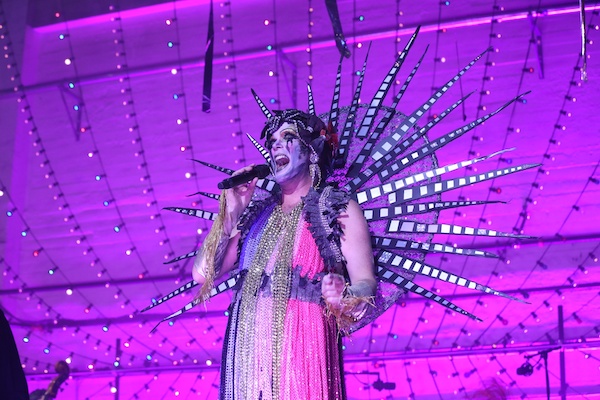Kristy Edmunds took over the reins of performing arts at UCLA at a time (2010–11) when the kind of avant-garde international theater and festival programming it was famous for seemed to be all but dropping from UCLA’s sightlines. But Edmunds’ purpose and seriousness were conveyed in the rebranding alone: the Center for the Art of Performance (“CAP” UCLA). Within a year, we had a treatment of the work of Jun’ichiro Tanizaki by Complicité, Peter Brook and the Théâtre des Bouffes du Nord, a raft of new music, and a reunion of Robert Wilson, Philip Glass and Lucinda Childs; and Edmunds was just getting started.
Edmunds went on to make CAP UCLA a case study in how to transform an arts institution, and how to bond it to the artists and the community it serves. In essence, she has done that by taking an artist’s approach to programming by transforming the creative and curatorial process to them.

Pam Tanowitz, Four Quartets. Photo: Maria Baranova.
Another of her achievements has been a major expansion of CAP UCLA’s physical presence beyond the UCLA campus into the Village and across town at the ACE Hotel, which is more or less where our conversation began.
The decision to expand CAP’s programming to alternative spaces was deliberate, Edmunds confirms. “I began to understand the extraordinary complexity of traffic and logistics and also the changing demographics: where artists are moving, the cultural enclaves and pockets of folks on the East Side… If people can’t get to us with the frequency they desire, can I find the vehicles that will bring the work closer to them? So the ACE partnership was one of those things. Moving a third of our programming into the downtown area was really about creating another point of access for the artists and the work and the communities.”
It is a complex equation, a kind of choreography, to connect these worlds. In another part of our conversation, Edmunds summed up the creative aspect of her role in that equation: “We have to have as much lithe and nimble erudition as an artist will to put the work in the context in which it’s going to mean the most.”
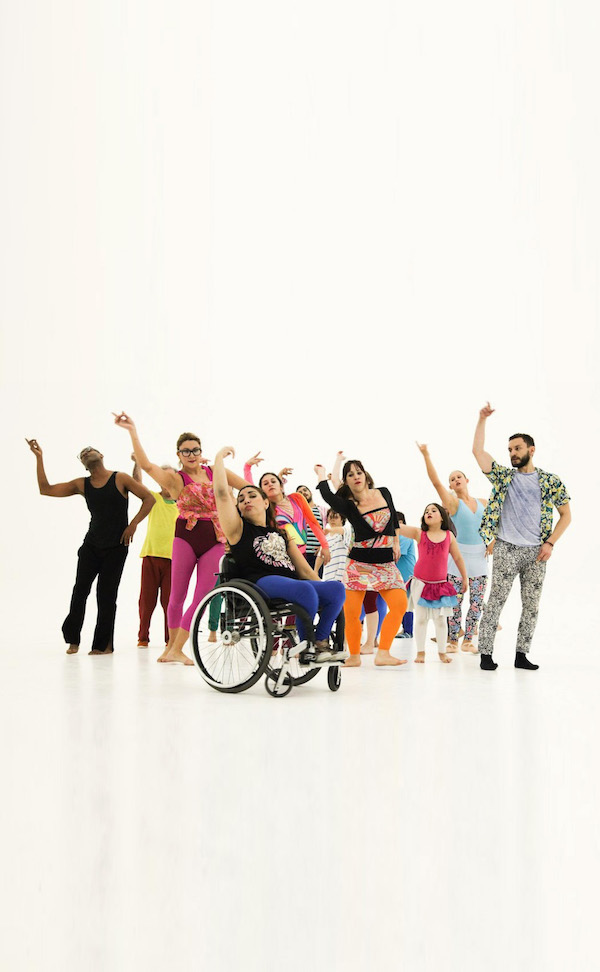
Jerome Bel, Gala. Photo: Josefina Tommasi
Audiences are seeing the evolution, and elevation in the standard and their own expectations, and the sense of what is driving this endeavor: a commitment to work across any number of media in pursuit of original ideas, forms and ways of thinking about and making sense of the contemporary world. Edmunds is fully committed to creating the conditions essential to achieving an artist’s vision and bringing the project forward.
“Every single dialogue and discussion with artists means I’m going to eventually end up on a pretty bespoke journey with them,” she explains. “If upholding the integrity of their vision as it’s evolving is part of the practice that I hold, then staying close to what those ideas are matters a great deal. It’s not just transactional.”
When asked if she shapes the programming with the intention of building community, Edmunds affirms, “Absolutely. It’s about what is the role of an artist in cultures across the world and inside a city of this size that the whole world lives in—either temporarily or permanently. For me it’s been about how I program in a way that is taking the artists with an extraordinary generosity of vision that they’re willing to put in front of the questions of our time and the questions they have with their art form, and to give it as much context for an audience as I can, so that they get… not just, ‘do I like the work, thumbs-up or down?’—but: Who is this maker, and in what conditions are they making? And why would they go to such extraordinary lengths to call our attention to something that might be less familiar, and certainly disruptive of the status quo, in order to open us to be awake to the world differently?”
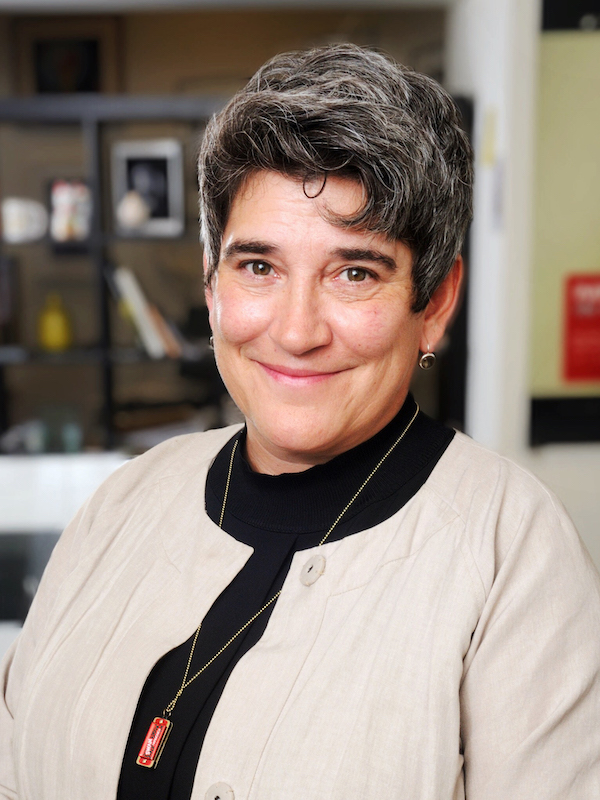
Kristy Edmunds. Photo: Thomas Wasper.
For all her breadth and commitment to the fresh and unfamiliar and nurturing the formal evolution of performing artists, she is careful to place some distance between her own enthusiasms and institutional prerogatives. “The worst thing I can do is privilege my personal aesthetic preferences,” she says. “If I condition people to respond to work that I like, then I’m denying the role and responsibility of an institutional practice. I have to be able to connect people to what is going to have integrity and meaning for them, with these artists in these specific sets of conditions—so that everyone can thrive together.”
Edmunds’ process involves helping artists shape their work, and bringing it to CAP UCLA’s various stages and alternative spaces. At any given time, Edmunds is conducting about 300 active conversations with artists, managers, producers and agents. Out of these, the CAP budget will expand to do 45 to 55 projects over a given set of years.
“But that’s probably about the amount an institution is going to be able to mind-share with an audience that’s already over-worked, overtaxed, over-stressed can even handle anyway!” she adds.“So I try to drill as deeply as I can in the principal art forms we’re focused on, and that tends to be five or six [major] productions or concerts a year. And then there are the areas that are signaling where artists are going—interdisciplinary collaborations or projects that are not squarely dance or choreography but might involve visual artist collaborations or a very unique way that a composer is addressing a cultural question in their work, and so forth.”
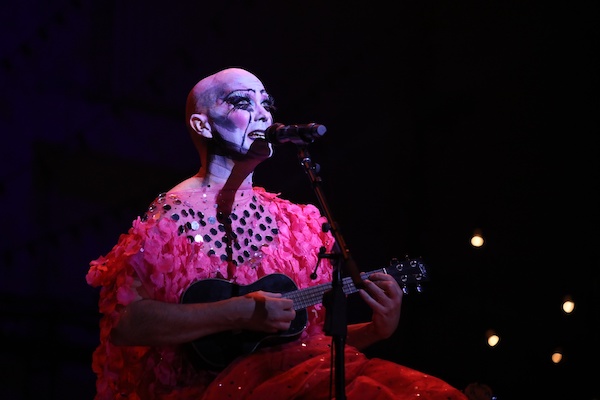
Taylor Mac, A 24 Decade History of Popular Music, Decades 13 thru 18 (1956-2016)
Beyond the daunting difficulties in staging large productions in Los Angeles, are the many problems in facilitating the movement of international elements.
“There’s a lot of reshuffling that goes on… I constantly feel as if I’m in an air traffic control station, seeing which planes can land and with what magnitude,” she says. “Which ones have to keep circling? In the complexity of humanity, there’s almost one project that’s programmed into the season; and then life happens… and it can’t happen. But there’s something real about that, too. When I have to tell our audiences that a project has to be postponed, it’s not like they see it as institutional failure. The reality is people understand now. When I think of the number of artists and practitioners who actually land and arrive here, or are local—our fellows—and have managed to be able to pull residency, creative development with us, find form and get that work on stage, it’s gobsmacking.”
In the last season, such artists included Jérôme Bel (“Gala”), Meredith Monk (“Cellular Songs”—which made for a kind of prelude to Yuval Sharon’s LA Phil production of her “Atlas”), Merce Cunningham (“Night of 100 Solos”) and Nico Muhly (a deep dive into the music of Philip Glass). Kaija Saariaho returns this season (collaborating in a multi-media production of Eliot’s Four Quartets), as does Jean-Claude Barrière, alongside Toshi Reagon’s musical treatment of Octavia Butler’s Parable of the Sower, and Michael Keegan-Dolan’s fantastical Nordic-Irish reincarnation of Swan Lake, among too many others to recite here.
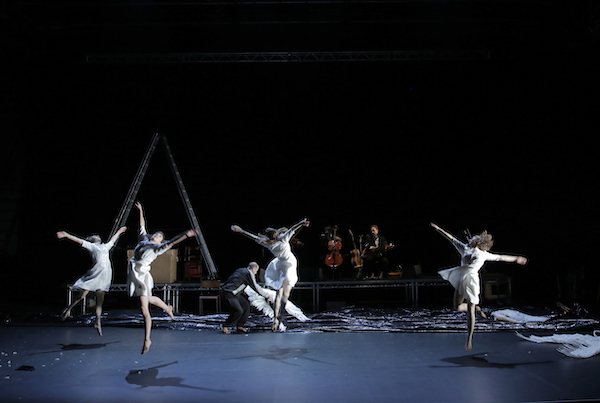
Michael Keegan-Dolan, Swan Lake. Photo: Colm Hogan.
The reverberations of last season seem to flow forward and back from Taylor Mac’s four night/24 decade ‘moment’ (A 24-Decade History of Popular Music). Revisiting that triumph, Edmunds conveys a sense of how she builds the connections between the artists and the audiences for an institution. “I look for where an artist making theater or choreography or whatever form—in order to add some authentic perspective—is bypassing the conventions they already know to allow an audience to be provoked to actually be more emotionally available to seeing something from a different angle, as opposed to the perceived security of going along with the conventional route or wisdom. Building a framework of an audience’s belonging, coming in and out of an institution, is asking people to remember that value proposition: that artists are not here to merely decorate our stages or reinforce our complacency. They’re provoking us to being awake differently and to use more of ourselves towards what they’re thinking about. If the performances are extraordinary, we will go there.”

